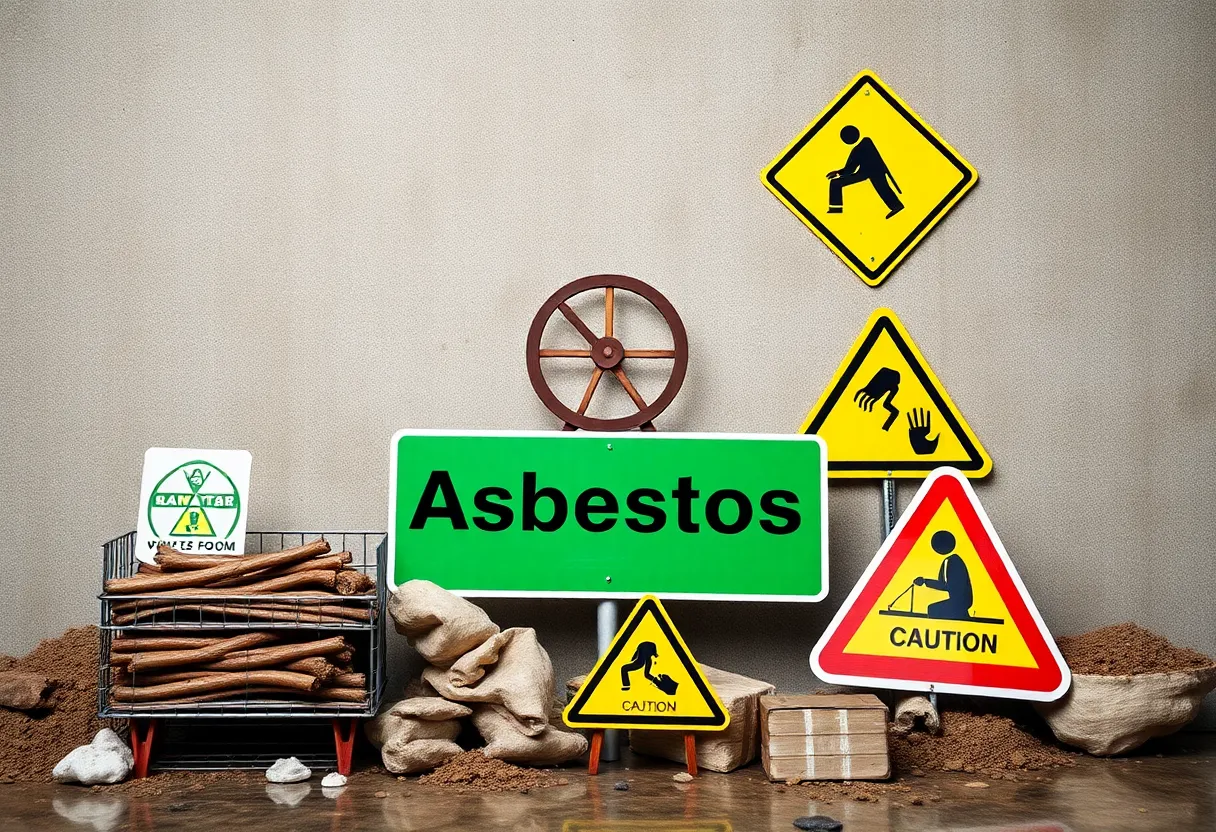News Summary
Recent judicial decisions have halted critical asbestos regulations in the U.S., with a 120-day delay impacting risk management rules for chrysotile asbestos. This pause raises public health concerns, as exposure to asbestos can lead to severe diseases such as mesothelioma. The ruling has prompted environmental advocates to express fears over the potential for prolonged exposure risks, highlighting a contentious balance between economic interests and health safety. Observers urge vigilance as stakeholders navigate the complexities of federal regulation concerning hazardous substances.
Major Developments in Asbestos Regulation Spark Controversy
In a significant move that has sent ripples through the environmental and public health landscape, federal judges from the 5th U.S. Circuit Court of Appeals have granted a temporary pause on crucial proceedings concerning asbestos regulations. This decision affects two key cases revolving around the chrysotile asbestos and methylene chloride risk management rules under the Toxic Substances Control Act. The Trump administration’s request to delay these cases has raised eyebrows across the nation as it could have lasting implications for public health protections.
What You Need to Know About Asbestos
Asbestos, a group of naturally occurring fibrous minerals, has been heralded for its usefulness in construction and insulation but has also been recognized as a dangerous health hazard. Its exposure is linked to serious diseases such as mesothelioma, a rare but aggressive cancer primarily affecting the lining of the lungs. With the only remaining form of asbestos still used in the U.S. being chrysotile, the stakes are high in these legal battles.
The Court’s Decision: A Double-Edged Sword
The decision to hold off proceedings for 120 days has been portrayed as a strategic pause, allowing the new leadership of the Environmental Protection Agency (EPA) to review the existing regulations concerning chrysotile asbestos. While the review may be essential to adapting modern environmental policies, it raises questions about the future of asbestos regulation in the U.S. and the ongoing risks to public health.
A Closer Look at the Regulations
These particular regulations are part of a broader movement to tighten controls on hazardous substances. The Biden administration has championed a robust crackdown on asbestos, culminating in a recent rule that mandates the phasing out of chrysotile. However, with the new legal developments, stakeholders are left wondering whether these efforts will be undermined.Environmental advocates argue that postponing the proceedings could lead to delays in the implementation of vital protections against an already dangerous substance.
Impacts on Public Health and Safety
The ramifications of this decision are profound. Delaying the enforcement of stricter controls on chrysotile could prolong the exposure risks for workers in various industries, including construction and shipbuilding, where asbestos use has been historically prevalent. This prolongation might increase the incidence of asbestos-related diseases, including mesothelioma and asbestosis, affecting countless families across the U.S.
Industry Responses and Public Sentiment
As the situation unfolds, various industry groups and lobbyists are weighing in on the matter, some advocating against stringent regulations while others support public health measures. The balance between economic interests and health safety is a contentious topic that heightens tensions among lawmakers, industry representatives, and the public.As awareness of mesothelioma and asbestos-related dangers grows, it is clear that the decisions made in the coming months will shape the future of environmental health in the country.
Looking Ahead: The Importance of Vigilance
As the review period unfolds, stakeholders must be vigilant. The dynamics of federal regulation surrounding toxic substances like asbestos are in constant flux, and the consequences extend beyond legal implications to the very health and safety of American citizens. Observers urge the public to stay informed and advocate for strong regulations that prioritize health over profit.
In conclusion, the developments surrounding the chrysotile asbestos regulation provide a stark reminder of the intertwined nature of public health and environmental policy. The coming months will be critical as the court’s delay shapes the trajectory of asbestos regulation, impacting lives nationwide. It is an ongoing narrative that underscores the urgency for stricter controls and the protection of vulnerable populations from the dangers of asbestos exposure.
Deeper Dive: News & Info About This Topic
HERE Resources
New Asbestos Management Report Sparks Debate on Regulatory Changes in NSW
Trial Commences in Fort Lauderdale Over Mesothelioma Case Linked to Asbestos Exposure
Family of Former Builder Seeks Answers After Mesothelioma Death
Asbestos Alert: Fly-Tipping Strikes St Ives Cemetery
Contractor Sentenced to 10 Years for Asbestos Fraud and Elder Abuse
Brake Wear Pollution Outweighs Diesel Exhaust in Lung Damage
Contractor Sentenced for Exploiting Elderly and Asbestos Safety Violations
Mesothelioma Lawsuit Highlights Asbestos in Talc Products
Researchers Unveil Promising Breath Test for Early Detection of Mesothelioma
Study Aims to Unravel the Mystery of Mesothelioma’s Long Latency Period



















